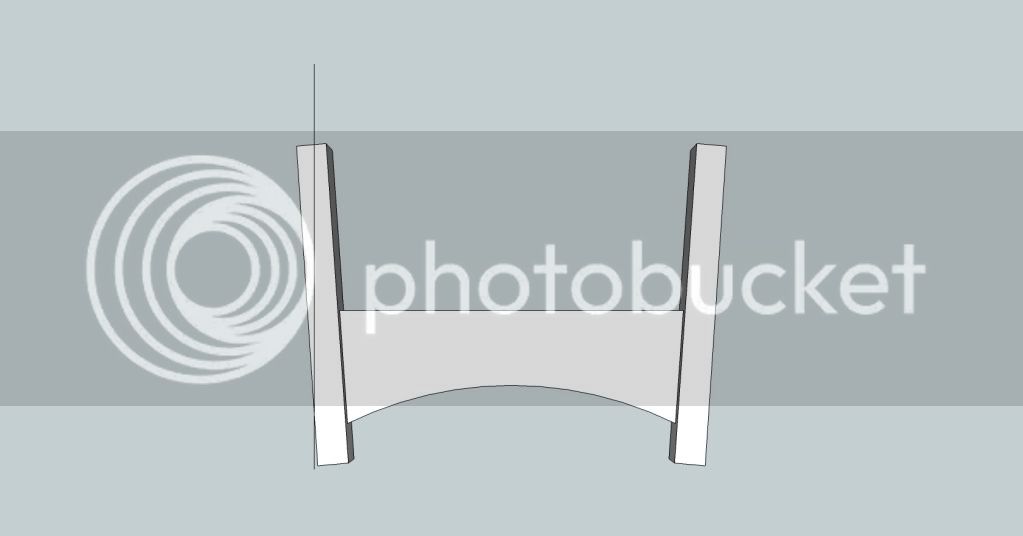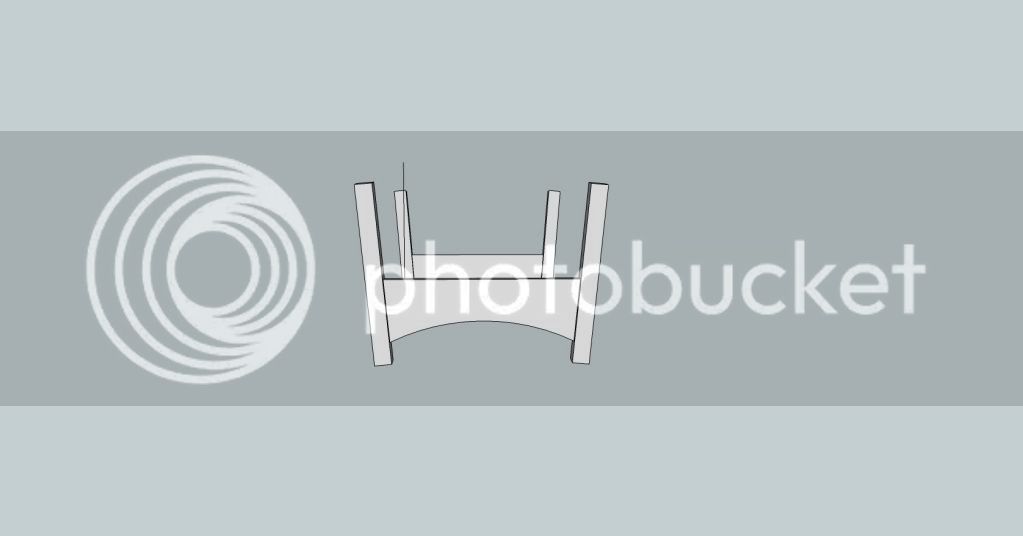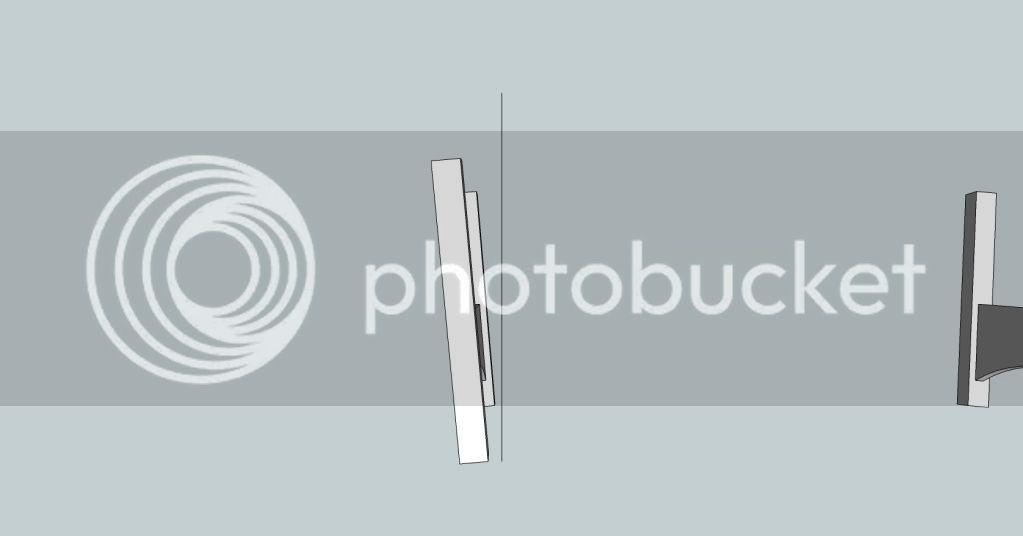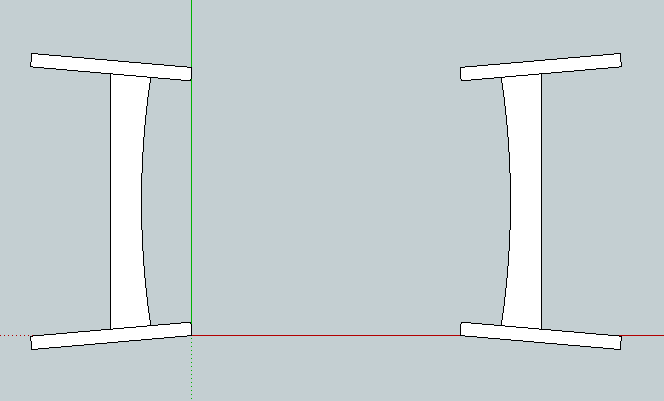TrimTheKing
Established Member
Hi all
I am trying to design a bed for my daughter and I have found either a c0ck up on my part that I can't find where I'm introducing, or a 'featuer' of SketcUp that I can't understand.
Below is a 2D output of the head/foot boards and so you understand the processes I have done I will explain.
I have created the legs as components then flipped the foot board ones on their red axis and the rigth hand side ones at both ends on their red axis.
Next I have used the protractor to rotate the legs outwards by 5 degrees and back by the same. So effectively the tops of the legs point out at a diagonal from the centre of the bed. Still with me...
Now look at the measurements (bearing in mind that at no point have I modified the squareness of the legs to each other)!!!
This is causing me an issue because now when I try to add the side rails and put the curve in them, because the adjoining sides of the side rail are not square it causes an issu.
Can you help???
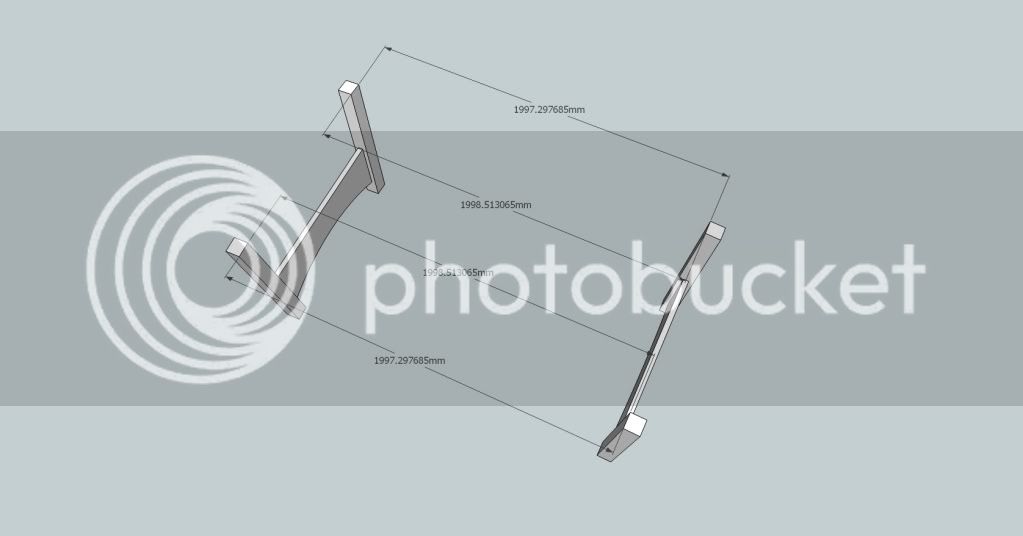
Thanks in advance.
Id this explanation doesn't make sense let me know and I will try and make it clearer.
I am trying to design a bed for my daughter and I have found either a c0ck up on my part that I can't find where I'm introducing, or a 'featuer' of SketcUp that I can't understand.
Below is a 2D output of the head/foot boards and so you understand the processes I have done I will explain.
I have created the legs as components then flipped the foot board ones on their red axis and the rigth hand side ones at both ends on their red axis.
Next I have used the protractor to rotate the legs outwards by 5 degrees and back by the same. So effectively the tops of the legs point out at a diagonal from the centre of the bed. Still with me...
Now look at the measurements (bearing in mind that at no point have I modified the squareness of the legs to each other)!!!
This is causing me an issue because now when I try to add the side rails and put the curve in them, because the adjoining sides of the side rail are not square it causes an issu.
Can you help???

Thanks in advance.
Id this explanation doesn't make sense let me know and I will try and make it clearer.





